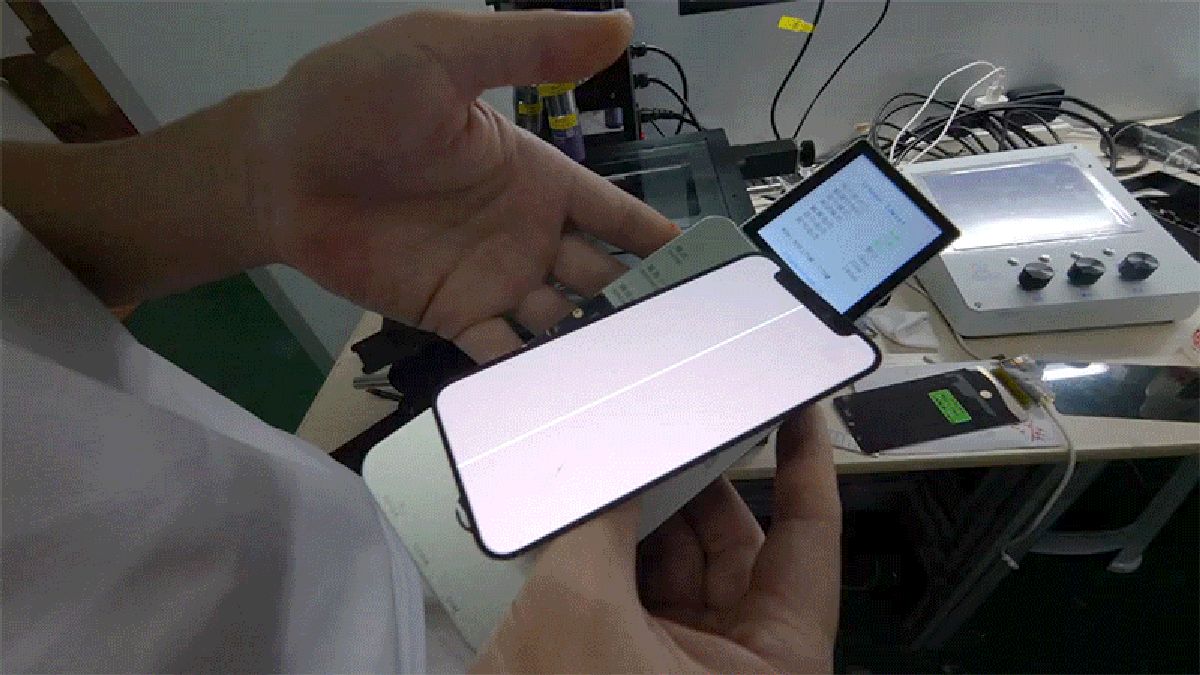This Machine Uses Lasers to Fix Broken Smartphone OLED Screens
By leveraging the same technology and techniques used to manufacture OLED panels, including lasers, a new machine that recently debuted in China can be used to fix broken OLED panels exhibiting malfunctioning vertical lines without a device’s screen having to be turned off.
As durable as smartphones have become with waterproofing and shatter-resistant glass, sometimes it doesn’t take much—maybe a drop of water or a small piece of dust—to make a device’s screen malfunction, and in turn, render the device unusable. With the right tools and a little skill, smartphone screens can be replaced, but many consumers simply choose to put potential repair costs towards the price of a new device, resulting in more e-waste.
Advertisement
Thankfully, there’s a thriving industry dedicated to repairing and recycling mobile devices, which now has a new machine at its disposal that can make malfunctioning OLED displays look as good as new , and Scotty Allen, of the YouTube channel, Strange Parts, recently got a demonstration. OLED panels are manufactured using a process called excimer laser annealing—or ELA—where a layer of amorphous silicon is laid down and then turned into polycrystalline silicon using a pulsed laser to create the microscopic conductive wiring that connects all of the panel’s pixels together. If any part of that complex network of wiring gets damaged or corroded, it can lead to parts of the screen malfunctioning and producing visual defects like vertical lines.
This Laser Fixes Broken iPhone Screens - While They’re On!
This new machine, run by an operator using a powerful microscope to analyze the microscopic structure of the OLED, uses that same laser technology to repair and reform broken wire traces. The repairs can often be done even with a top layer of protective glass still adhered to the OLED panel underneath and while the panel is still powered and running, allowing the operator to immediately see if the attempted repairs were successful. In some cases, the glass needs to be removed using a thin metal wire that essentially saws through the glue holding the two pieces together.
Advertisement Advertisement
The machine means that one of the most expensive components in a smartphone, especially those using OLED panels, now has an even greater potential of being repaired and re-used, instead of either requiring more extensive ( and expensive) repairs or ending up as another addition to an ever-growing mountain of e-waste.
Source: Gizmodo


